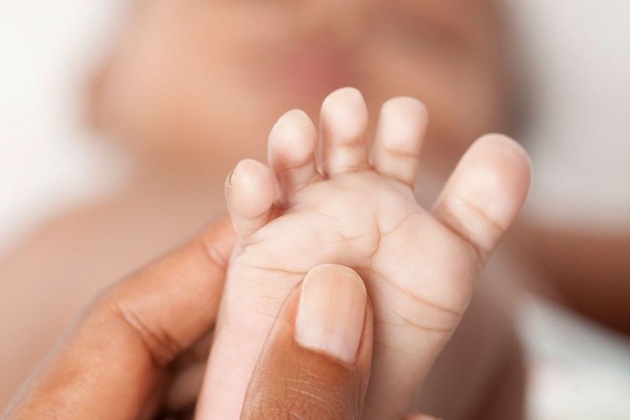
Mr Tickle can’t bamboozle a baby. Unlike grown-ups, young infants don’t let the positioning of their bodies confuse their sense of touch.
If adults who can see are touched on each hand in quick succession while their hands are crossed, they can find ithard to name which hand was touched first. Adults who have been blind from birth don’t have this difficulty, but people who become blind later in life have the same trouble as those who can still see.
“That suggests that early on in life, something to do with visual experience is crucial in setting up a typical way of perceiving touch,” says Andrew Bremner at Goldsmiths, University of London.
To investigate how this develops in infancy, Bremner and his colleagues compared how babies reacted to having one foot tickled.
With their legs crossed over, babies aged 6 months moved the foot being tickled half of the time. But 4-month-olds did better, moving the tickled foot 70 per cent of the time – as often as they did with their legs uncrossed.
Separate worlds
The team concludes that at 4 months, babies haven’t yet learned to relate what they touch to the physical space that their body occupies. For many adults, the concept might be difficult to envision. “It’s like imagining that you feel a touch on your body, but not really knowing how that’s related to what you’re looking at,” says Bremner. “It’s almost like you have multiple sensory worlds: a visual world, an auditory world and a tactile world, which are separate and not combined in space.”
Bremner thinks these worlds start to combine when babies touch objects at the same time as seeing them. It’s at about 5 months that babies typically start to successfully reach for objects. “Getting those kinds of coordinated experiences between what they’re seeing and what they’re feeling is going to give babies this sense that touches are related to the visual spatial fields,” he says. “That’s going to lead them into these kinds of errors, so when they feel a touch on their right foot, they expect it to be on the right side of space.”
Tobias Heed at the University of Hamburg, Germany, is sceptical of the findings, saying he doubts that such young infants give coordinated responses to foot stimulation. “My own experience is that 4-month-olds do not respond coherently to touch on the feet,” he says. His research suggests that children don’t automatically integrate mental representations of space until the age of 5.
Mr Tickle can’t bamboozle a baby. Unlike grown-ups, young infants don’t let the positioning of their bodies confuse their sense of touch.
If adults who can see are touched on each hand in quick succession while their hands are crossed, they can find ithard to name which hand was touched first. Adults who have been blind from birth don’t have this difficulty, but people who become blind later in life have the same trouble as those who can still see.
“That suggests that early on in life, something to do with visual experience is crucial in setting up a typical way of perceiving touch,” says Andrew Bremner at Goldsmiths, University of London.
To investigate how this develops in infancy, Bremner and his colleagues compared how babies reacted to having one foot tickled.
With their legs crossed over, babies aged 6 months moved the foot being tickled half of the time. But 4-month-olds did better, moving the tickled foot 70 per cent of the time – as often as they did with their legs uncrossed.
Separate worlds
The team concludes that at 4 months, babies haven’t yet learned to relate what they touch to the physical space that their body occupies. For many adults, the concept might be difficult to envision. “It’s like imagining that you feel a touch on your body, but not really knowing how that’s related to what you’re looking at,” says Bremner. “It’s almost like you have multiple sensory worlds: a visual world, an auditory world and a tactile world, which are separate and not combined in space.”
Bremner thinks these worlds start to combine when babies touch objects at the same time as seeing them. It’s at about 5 months that babies typically start to successfully reach for objects. “Getting those kinds of coordinated experiences between what they’re seeing and what they’re feeling is going to give babies this sense that touches are related to the visual spatial fields,” he says. “That’s going to lead them into these kinds of errors, so when they feel a touch on their right foot, they expect it to be on the right side of space.”
Tobias Heed at the University of Hamburg, Germany, is sceptical of the findings, saying he doubts that such young infants give coordinated responses to foot stimulation. “My own experience is that 4-month-olds do not respond coherently to touch on the feet,” he says. His research suggests that children don’t automatically integrate mental representations of space until the age of 5.



